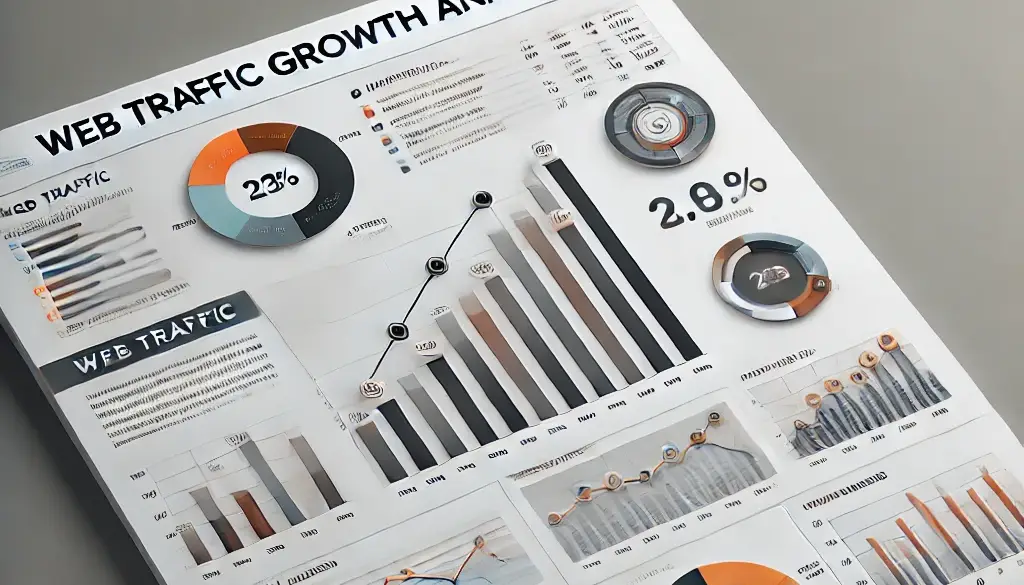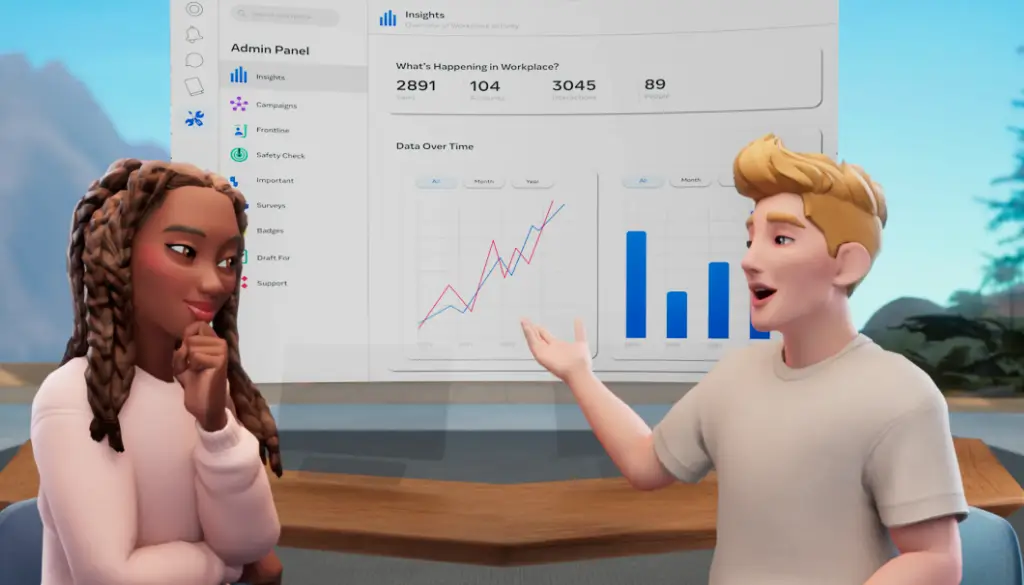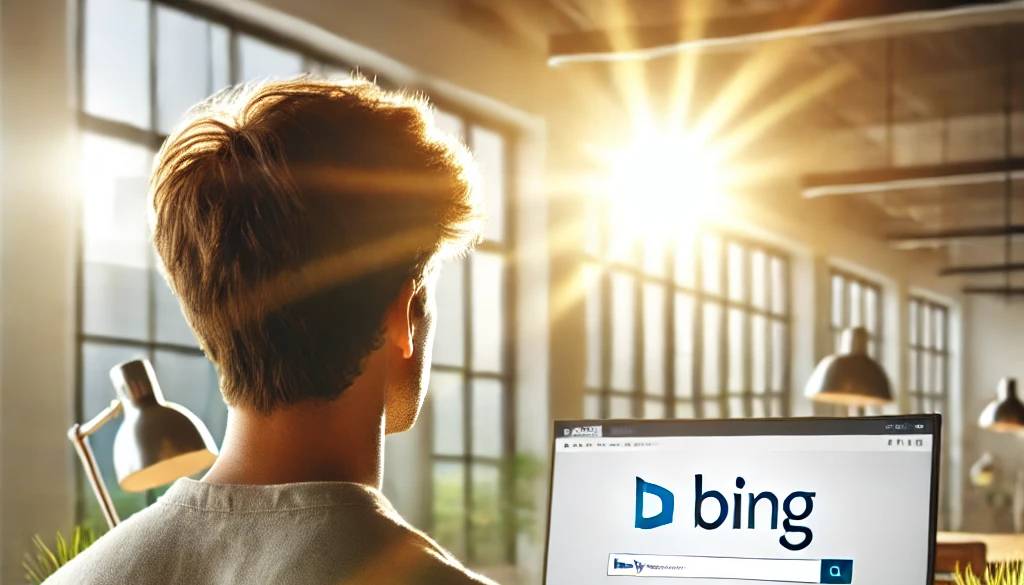My team and I spend a lot of time preparing client training, creating work summaries, and building optimization project plans. These are all part of our approach to gaining buy-in and demonstrating the value of our job. Creating the perfect SEO report is just as important.
What is an SEO Report?
An SEO report is a comprehensive document that summarizes a website’s performance in the search bar. It provides insights into the website’s search engine optimization (SEO) efforts, highlighting successes, areas for improvement, and growth opportunities. A well-crafted SEO report helps clients understand the impact of SEO on their business, making it an essential tool for any digital marketing agency or SEO professional. By presenting all the data in a clear and organized manner, an SEO report ensures that stakeholders can quickly grasp the effectiveness of the implemented SEO strategies.
Why SEO Reporting is Important
SEO reporting is crucial for several reasons:
-
-
- Transparency: SEO reports provide clients with a clear understanding of the SEO work, fostering trust and accountability.
- Measuring success: SEO reports help track the effectiveness of SEO strategies, allowing for data-driven decisions and adjustments.
- Identifying opportunities: SEO reports highlight areas for improvement, enabling SEO professionals to optimize their strategies and improve results.
- Client satisfaction: Regular SEO reporting demonstrates a commitment to client satisfaction, helping to build long-term relationships.
-
By consistently delivering detailed and insightful SEO reports, you can ensure that your clients are always informed and confident in the progress of their SEO efforts.
Where We Go Wrong
As SEO experts, we occasionally need to consider the report as a communication instrument. We may cut corners in the hopes that the facts will speak for themselves, but many customers tend to be dazzled by the next shiny object. So, we need to build out our report and ensure that the data is not taken out of context.
When done correctly, SEO reports will reiterate the points we’ve made throughout our pitches, proposals, and training.
When done wrong, SEO reports cause confusion, sometimes panic, and a sinking sense of distrust among our stakeholders.
What Is The Report For?
When creating reports, we must identify what the report should show.
If we report on a specific project’s outcome, we must consider the original hypothesis.
What did we hope to achieve with that project? What success metrics and milestones were promised? When presenting an SEO report, include all critical measurements.
A well-defined SEO strategy will help align the reports with the client’s business goals, providing transparency and customer satisfaction across ongoing campaigns.
Is this a monthly performance update or some other type of recurring report? If this is the case, we must consider every aspect of SEO we have direct control over and any uncontrollable factors contributing to performance gains or losses. One crucial element that can account for variations in performance is algorithm upgrades. It is necessary to provide the backdrop in which our SEO efforts function.
This should form the starting point from which we choose the report metrics.
Choosing the right SEO metrics is crucial for creating effective SEO reports. The metrics you select should align with your client’s goals and objectives, ensuring the data you present is relevant and actionable. Here are some key metrics to consider:
-
-
- Organic Traffic: This measure displays how many people find your website using search engines. It’s a fundamental indicator of your site’s visibility and the effectiveness of your SEO efforts in driving traffic.
- Keyword Rankings: This measure tracks your website’s position in search engine results pages (SERPs) for specific keywords. Monitoring keyword rankings helps you understand which terms are driving traffic and where improvement opportunities exist.
- Click-Through Rate (CTR): This measure displays how many people find your website using search engines. A high CTR indicates that your meta titles and descriptions are compelling and relevant to search queries.
- Conversion Rate: This measure displays the proportion of visitors to your website who finish a desired action, such as completing a form or buying something. It directly measures how well your site converts traffic into leads or sales.
- Backlinks: This metric counts the number of links pointing to your website from other websites. Backlinks are crucial to search engine results because they tell search engines that your website is reliable and authoritative.
- Domain Authority evaluates your website’s credibility and strength. A higher domain authority can result in better search engine results and more organic visitors.
-
When choosing SEO metrics, it’s essential to focus on those most relevant to your client’s business goals. For example, if your client runs an e-commerce website, prioritize metrics such as conversion rate and revenue. By aligning your SEO reports with your client’s objectives, you can provide more meaningful insights and demonstrate the value of your SEO efforts.
Gathering Data for Your SEO Report
To create a comprehensive SEO report, you’ll need to gather data from various sources, including:
-
-
- Google Search Console: This tool provides insights into search engine rankings, impressions, and clicks, helping you understand how your site is performing in search results.
- Google Analytics: Offers data on website traffic, engagement, and conversion rates, giving you a complete picture of user behavior on your site.
- SEO tools: Use tools like Ahrefs, SEMrush, or Moz to gather data on keyword rankings, backlinks, and technical SEO tool issues, ensuring you have all the necessary information.
- Client feedback: Incorporate client feedback and goals to ensure the report is tailored to their needs, making it more relevant and actionable.
-
By combining data from these sources, you can create an SEO report that provides a holistic view of your website’s performance and highlights key metrics that matter to your clients.
Aspects Of A Good SEO Report
A well-written SEO report will convey knowledge and the next steps. It should contain enough information to support the reader’s decision-making.
Include Relevant Data
Reports should include data that is relevant to the topic being reviewed.
Including metrics such as search rankings can help assess the effectiveness of SEO strategies and provide insights into fluctuations due to algorithm updates and market dynamics.
They should not overwhelm a reader with unnecessary information.
Keep Them Brief
Reports should be brief enough that pertinent data and insight are easy to find.
Brevity might be the difference between a report being read and being ignored.
Keep the data being reported succinct. Sometimes, a chart will better illustrate the data than a table.
Remember The Audience
Customize your reports to the recipient’s requirements. The business’s managing director can receive one report, and the SEO specialist can receive a different one.
These two audiences might require somewhat different data to assist each recipient with the status of SEO activity.
Considering the reader’s needs is necessary to decide on and determine the next course of action. The managing director won’t need to know which pages give a 404 server error, but another SEO could.
Make Them Easy To Understand
They should not include unexplained jargon or expect readers to infer meaning from statistics.
When writing reports, consider the recipient’s knowledge. A report’s liberal use of jargon may turn off readers who are not in the field.
Using an SEO report template can streamline the reporting process, facilitating the precise and efficient presentation of data.
On the other hand, someone who understands SEO and can help keep SEO reports concise will be okay with jargon and acronyms.
Provide Insight
Data alone is likely unhelpful to most.
SEO reports shouldn’t just be figures. Insight and conclusion must be drawn, too.
This implies that we, as SEO specialists, should be able to improve the report by examining the data. We might offer our conclusions as recommendations for the next steps or actions.
Reporting On Metrics Correctly
When metrics are used appropriately in an SEO report, the conclusions can be excellent, but the opposite is true. The “site-wide bounce rate” is one illustration of this.
A visit to a website that results in loading the above-the-fold content and no additional interactions, leading to a quick departure, is referred to as a bounce.
The percentage of all site visits that resulted in a bounce is known as the bounce rate.
A page’s bounce rate can be helpful, but only if it’s being compared to another measure.
For example, if a page’s layout has been altered and the bounce rate rises, it may indicate that users are having trouble navigating the new design.
However, SEO reports on a page’s bounce rate need to examine other metrics more closely to be accurate.
For example, if the page’s modifications made it easier for users to discover information, the rise in bounce rate can be a sign that the new design is working.
The difference in bounce rate cannot be used in isolation as a measure of success.
Similarly, reporting the average bounce rate across the website must be more accurate.
Some pages on the website might have a high bounce rate but be perfectly fine. For others, it indicates a problem. For example:
-
-
- An SEO report might show that many visitors bounce when they find a phone number and leave the site to call it.
- However, a high bounce rate on a homepage or product page is usually a sign that the page is not meeting users’ needs.
-
An SEO report should conclude a range of metrics.
Metrics Need Context
Few metrics can be used in isolation and still enable accurate insight. Consider crawling and indexing data, for example.
An SEO report showing how many URLs Googlebot is crawling can be a reasonable way to illustrate a website’s technical health. But it does not provide a clear picture. A rise in the number of URLs crawled may mean that Googlebot is discovering more pages on your website than it was previously able to. This might be a good trend if you have been working on adding new parts to your website.
This is a serious issue, though. If you look further, you will find that the URLs Googlebot has been crawling are the consequence of spam attacks on your website.
The number of crawled pages alone does not provide meaningful context for the site’s technical SEO assessment. More context is needed to draw reliable conclusions.
Over-Reliance On Metrics
Metrics for a page’s or domain’s authority are other metrics rather over-relied upon in SEO reports.
Although these third-party indicators can accurately estimate a page’s prospective ranking in search results, they will only be partially accurate.
They can help demonstrate whether a website improves over time, but only in comparison to the SEO report’s estimates.
SEO specialists can use these indicators to approximate an authority-building project’s success. However, they might need fixing when reported to management, clients, and stakeholders.
People often choose these SEO report ratings as their objective if they need to be fully aware of what they mean.
Which Metrics Matter?
The SEO report aims to determine which metrics should be combined to show SEO performance. What the recipient needs to know also plays a role.
Some managers or clients may be accustomed to seeing reports with particular KPIs. They may expect to see specific data because the SEO statistics feed into their own reporting.
Asking the person who received the SEO report if they have any specific questions is a smart approach.
The report should always reference the brand’s marketing and business objectives. The SEO report’s metrics should indicate whether the goals are being fulfilled.
For example, the SEO report should include the following metrics if the pet store’s marketing objective is to boost sales of “non-slip pet bowls”:
-
-
- Overall traffic to the pages in the www.example.com/pet-accessories/bowls/non-slip folder.
- Organic traffic to those pages.
- Overall and organic conversions on these pages.
- Overall and organic sales on these pages.
- Bounce rate of each of these pages.
- Traffic volume landing on these pages from the organic SERPs.
-
This report will eventually assist in determining whether SEO is helping to achieve the objective of raising non-slip pet bowl sales.
Types of SEO Reports
Organic Performance Reports
These reports are intended to provide an overview of a website’s continuous SEO performance. They provide high-level information on the origin and trends of organic traffic and should include data that indicates whether the business, marketing, and SEO goals are being met.
An SEO performance report should examine the organic search channel, both individually and about other channels.
By doing this, we can see the impact of other channels on SEO success and identify trends or patterns.
Thanks to these data, the reader should be able to determine how recent SEO efforts have affected organic traffic.
Metrics To Include
Some good metrics to report on for organic performance reports include:
Overall Visits
The number of visits to the website gives something to which to compare the organic search visits.
We can tell if organic traffic is decreasing whereas overall traffic is increasing or if organic traffic is growing despite an overall drop in traffic.
Overall traffic visit data can be used to discern whether the website’s popularity is seasonal.
Traffic Visits By Channel Using Google Analytics
Examining the number of visits from each marketing channel can help you determine whether other channels affect SEO success.
For instance, new PPC ads online could mean cannibalizing organic search traffic.
All Traffic And Organic Traffic Goal Completions
Have visitors completed the goals in the website’s analytics software?
By comparing organic and other traffic goal completions, it will be possible to determine whether website traffic achieves goal completions above or below average compared to different channels.
This could help determine if SEO activity has as much of a positive effect as hoped.
Page Level Traffic
Include real-time traffic figures for any recently changed pages, such as new content or keyword optimization. This entails reporting at a fine level.
Provide data on website traffic over time, page conversions (if applicable), and actions taken from a particular page. This can demonstrate whether or not recent efforts have been effective in boosting real-time traffic to specific pages.
Organic Landing Page Sessions
Visitors came to these pages from the natural search engine results pages. In real time, they determine which pages drive the most website traffic.
From here, pages that have yet to be optimized but show potential to drive traffic can be identified.
Revenue Generated
This is the most crucial metric if you can directly relate your job to the money it brings in.
This is ultimately what your employer and your boss’s boss probably care about. Does SEO increase the company’s revenue?
Keyword Rankings Reports
A note on keyword rankings reports: Consider what they show before including them.
A summary such as “your site is keyword rankings for X keywords” doesn’t provide any helpful information or motivation for further work.
-
-
- Which keyword rankings?
- Are those keywords driving traffic to the site?
- Are they worth optimizing for further keyword rankings?
-
Generative engine optimization can significantly impact brand importance, making it crucial to consider in your keyword strategy.
Metrics To Include
Reports on keyword rankings should show increases or decreases in ranks for particular keywords for which the website is optimized.
Data should ideally be taken from third-party tools such as Google Search Console to provide the most accurate ranking indication.
Consider looking at patterns instead of specific keywords. In other words, is your website becoming more visible for conversion-generating keywords?
For instance, showing that the website has risen from the top for ten terms to the top for 20 terms does not illustrate how it could affect income.
In the age of generative engine optimization, brand is becoming more critical.
A section on brand searches and how they are used to access products directly could be helpful.
I might want to check how my website would rank for “Helens Pet Store, “Helens Pet Store dog beds,” and “Helens Pet Store cat bowls,“ using my pet store as an example.
This aids in analyzing how your brand’s reputation for goods and services is increasing. These searches demonstrate how visitors want to go directly to your website because they are sure they want to buy from you.
Technical Performance Reports
A website that is easy for search engines to crawl and index is necessary for good SEO performance.
This implies that routine audits must be conducted to find anything preventing the right pages from showing up in the SERPs.
SEO reports differ slightly from audits in that a technical audit will investigate many other factors.
A comprehensive technical audit may be extensive. It must identify problems and suggest fixes to enhance the website’s functionality.
A technical report should carefully highlight the difficulties based on its intended audience and demonstrate the effectiveness of earlier SEO efforts.
Knowing what has transpired on the site thus far is essential to determining which metrics to include in a technical report.
If work has been carried out to fix an issue, include metrics that indicate the success of that fix.
For example, if a spider trap issue has been fixed on the website, provide information on crawl metrics and log files.
In this case, it can be helpful but may only be required for some technical reports.
Metrics about load speed will be essential for the technical report if the website has issues with slow loading.
Prioritizing activities is an effective technique for communicating the metrics in a technical SEO report.
Mark any concerns as urgent if the metrics indicate that they exist. Point out any problems that can wait or be resolved in due course.
Technical SEO can feel overwhelming for people who aren’t experts in it.
Breaking the issues into priorities can make your reports more accessible and actionable.
Metrics To Include
Specific metrics may be useful to include as part of a technical performance report:
Server Response Codes
Monitoring the quantity and proportion of pages that return a non-200 response code over time can be wise.
The specific pages that do not give a 200 response code should be identified through a site audit.
It might be best to provide this information as an appendix or not at all because the recipient of the technical performance report might need help finding it useful.
An increase in the number of responses, 200 codes over time, may indicate that the website’s technical problems are being resolved.
If it goes up, then further work needs to be carried out.
Page Load Speed Times
Reporting the average speed at which a website’s pages load can be useful. This may show whether or not the webpage is loading more quickly.
Reporting on the average load speed of the top five fastest and five slowest pages may be more helpful. This can help highlight pages that may require additional work and very fast layouts.
Any Data That Shows A Need To Act
It is crucial to include this. If a site’s error makes it impossible to index, it should be noted in the report.
Depending on the report, this could vary.
Examples of metrics include crawl data, site outages, broken schema markup, and others. Consider incorporating these data into upcoming reports to demonstrate how the modifications have affected performance.
A Word Of Warning
There are multiple ways to interpret the Technical SEO metrics: either they emphasize them as a part of SEO that they can comprehend, or they are not thought to be relevant to the stakeholder’s function and hence downplay their significance.
Take Core Web Vitals, for instance. Core Web Vitals don’t matter for rankings. Nevertheless, I have seen many developers concentrate solely on Core Web Vitals, which is a gauge of how well-optimized the website is from an organic search standpoint.
Why? They are a simple technical SEO component that stakeholders can easily comprehend and affect, and SEO experts have begun to report on them more.
They make sense, are easily measured, and can be optimized for.
Unfortunately, this occasionally leads to them being given too much weight. Because every little bit counts, we instruct engineers to spend entire sprints attempting to improve the Core Web Vitals scores by small amounts.
Think about how you convey the importance of the metrics you report on when covering technical SEO. Are they essential indicators of a website’s health? Are they “nice to know“ instead?
Make sure you give the full context of the metrics within your report.
Link Building Reports
Beyond increasing a website’s authority with the search engine, a link-building strategy can benefit it.
If done correctly, links should increase website traffic. Since this is a reliable indicator of success, it is crucial to include this information in link-building reports.
Metrics To Include
-
-
- URLs Of Links Gained: Which links have been gained in the reporting period?
- Links Gained: Which of the links obtained are directly attributable to outreach initiatives?
- Links Driving Traffic: Which links gained during the period have resulted in referral traffic, and what is the volume of visits?
- Percentage Of Valuable Vs. Less Valuable Links: Of the links gained in the period, which ones are perhaps marked as “nofollow“ or are on syndicated and canonicalized pages?
-
These reports can entice you to incorporate a page or domain strength score. It makes sense if that aids in conveying the success of an outreach initiative.
But remember that connections from highly relevant websites—even if they lack authority—will still help your site.
Don’t let the fact that the connections you obtain don’t rank highly with these metrics drive you to abandon your outreach efforts.
Using Google Search Console for SEO Reporting
Google Search Console is a powerful tool for SEO reporting, offering insights into:
-
-
- Search engine rankings: Track keyword rankings and identify opportunities for improvement. This will help you understand how your site is performing in search results.
- Impressions and clicks: Analyze the number of impressions and clicks your website receives in search results, providing a clear picture of your site’s visibility and engagement.
- Search queries: Identify the search queries driving traffic to your website, allowing you to optimize your content for the most relevant keywords.
- Technical SEO issues: Detect and address technical SEO issues, such as crawl errors or mobile usability problems, ensuring your site is easily accessible to search engines and users.
-
By leveraging the insights from Google Search Console, you can create an SEO report highlighting key metrics and providing actionable recommendations for improving your site’s performance.
Automating SEO Reporting
Automating SEO reporting can save time and increase efficiency. Consider using tools like:
-
-
- AgencyAnalytics: A comprehensive reporting platform that integrates with Google Analytics and Search Console, allowing you to create detailed and customizable reports.
- SE Ranking: A tool that offers automated SEO reporting and tracking, making it easy to monitor your site’s performance and identify areas for improvement.
- Google Data Studio: A free tool that allows you to create custom, interactive reports, enabling you to present your data in a visually appealing and easy-to-understand format.
-
By automating SEO reporting, you can focus on high-level strategy and analysis rather than manual data collection and reporting. This saves time and ensures that your reports are always up-to-date and accurate, providing valuable insights to your clients.
Presenting SEO Reports to Clients
Presenting SEO reports to clients can be challenging, especially if they need to become more familiar with SEO terminology. Here are some tips for presenting SEO reports to clients effectively:
-
-
- Use Clear and Concise Language: Avoid technical jargon or complex SEO terms your client may need help understanding. Instead, explain concepts in simple terms and provide context where necessary.
- Use Visual Aids: Visual aids such as charts, graphs, and tables can help to make complex data more readily understandable. They can highlight trends and key metrics at a glance, making the report more engaging.
- Focus on Key Metrics: Concentrate on the key metrics that are most relevant to your client’s business goals. This ensures that the report is focused and actionable rather than overwhelming the client with unnecessary data.
- Provide Recommendations: Based on the report’s data, offer clear and actionable recommendations for how your client can improve their SEO performance. This will add value to the report and help guide the client’s future SEO strategy.
- Use a Clear and Concise Format: Structure the report with headings and subheadings to make it easy to navigate. A well-organized report is more likely to be read and understood.
-
Some popular tools for presenting SEO reports to clients include:
-
-
- Google Data Studio: A free tool that allows you to create interactive and visual reports. It integrates with various data sources, making it easy to present comprehensive SEO data.
- AgencyAnalytics: A tool that allows you to create custom client reports and dashboards. It integrates with Google Analytics and Search Console, providing a centralized platform for SEO reporting.
- SEMrush: A tool that offers a range of SEO reporting features, including keyword tracking and competitor analysis. It helps you create detailed reports that can provide valuable insights to your clients.
-
By following these tips, you can create effective SEO reports that provide valuable insights to your clients and help them improve their SEO performance. Clear communication and actionable recommendations are key to demonstrating the value of your SEO efforts and building strong client relationships.
Conclusion
The ideal approach to writing an SEO report is to think of it as a narrative. First, who is the audience? Be sure to write your report in a language that they can comprehend.
Make up a story. What are you hoping these numbers will reveal? Are you being truthful about the metrics you comment on, and do you provide all the nuances?
Make certain that you conclude the report. If something needs to be done about it, what should be done? Highlight and restate anything you want stakeholders to remember as a major takeaway from the report.
Finally, seek reviews on your reports. Ask your stakeholders to give you feedback on the report.
Assess whether it satisfies their needs or requires more information or context. This report is for them. Your SEO efforts only work if they benefit from them.






